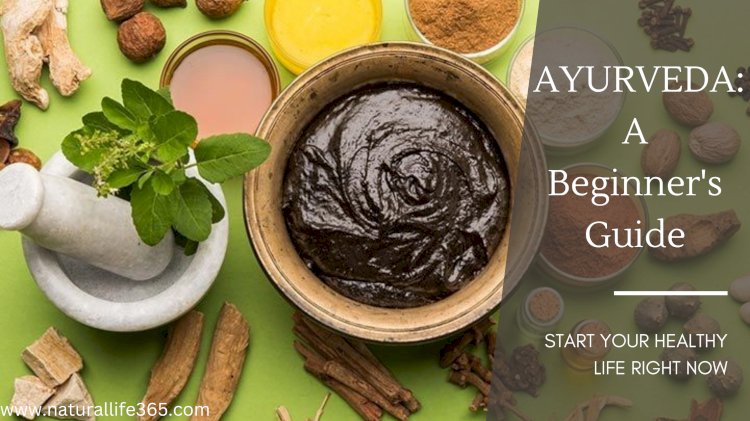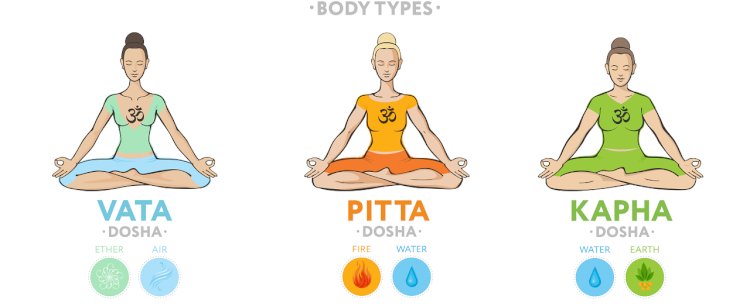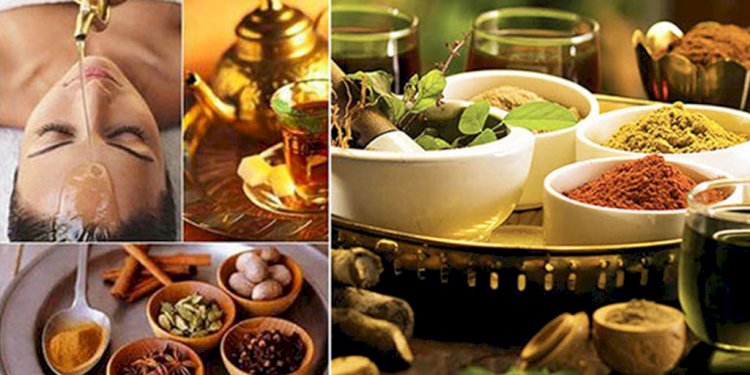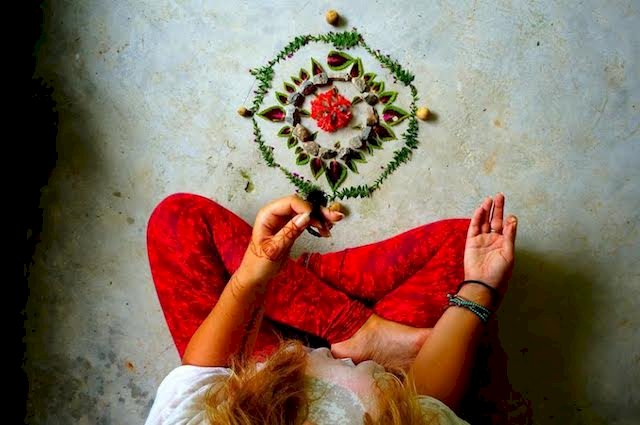Ayurveda 101: A Beginner's Guide to the World's Oldest Healing System
Ayurveda is an ancient Indian system of medicine that has been used for thousands of years to promote health and well-being. In this beginner's guide, we'll explore the fundamentals of Ayurveda, including its philosophy, and practical applications.

Ayurveda is a traditional system of medicine that originated in India more than 5,000 years ago. It is the world's oldest healing system and is still widely practiced today. Ayurveda is based on the belief that health and wellness depend on a delicate balance between the mind, body, and spirit.
The word Ayurveda is derived from the Sanskrit words 'Ayur' which means life and 'Veda' which means knowledge. Thus, Ayurveda is often referred to as the 'science of life.' Ayurvedic principles emphasize the importance of maintaining balance and harmony in all aspects of life, including diet, exercise, sleep, and daily routines.
In this beginner's guide to Ayurveda, we will explore the basic principles of Ayurveda, including the five elements and three doshas, as well as the concept of Prakriti, or body type. We will also discuss the importance of an Ayurvedic lifestyle, including diet, exercise, and sleep. Additionally, we will explore Ayurvedic remedies, including herbal medicines, therapies, and yoga and meditation practices.
By the end of this guide, you will have a better understanding of Ayurveda and its benefits, and you will be equipped with practical tips and recommendations for incorporating Ayurvedic principles into your daily life.
You can also read What are The Key Health Benefits of Abhyanga Massage?
Basic Principles of Ayurveda

Ayurveda is based on the belief that the universe is made up of five elements: earth, water, fire, air, and ether (space). These elements combine to form three doshas, or energies, in the body: Vata, Pitta, and Kapha.
Vata is composed of air and ether and is responsible for movement, including breathing and circulation. Pitta is composed of fire and water and is responsible for digestion, metabolism, and transformation. Kapha is composed of earth and water and is responsible for structure, stability, and lubrication.
Each person has a unique combination of these three doshas, known as their Prakriti. Knowing your Prakriti can help you understand your body's tendencies and vulnerabilities and guide you in making choices that promote balance and wellness.
In Ayurveda, balance is key. When the doshas are in balance, the body and mind are healthy, but when they are out of balance, disease, and illness can occur. Ayurvedic practices aim to restore balance by addressing the root cause of the problem rather than just treating the symptoms.
To maintain balance, Ayurveda emphasizes the importance of living in harmony with nature. This includes following a balanced diet based on your Prakriti, getting regular exercise, and getting enough rest and sleep. It also includes practices such as meditation and yoga to promote mental and emotional balance.
By understanding the basic principles of Ayurveda, you can begin to make choices that support your body's natural balance and promote health and wellness.
Understanding Ayurvedic Lifestyle

Ayurveda is not just a system of medicine but a way of life. It emphasizes the importance of living in harmony with nature and making choices that promote balance and wellness. Here are some key elements of an Ayurvedic lifestyle:
- Diet and Nutrition: Ayurveda recognizes that food is not just a source of energy but also a source of healing. Eating a balanced diet based on your Prakriti is essential to maintaining balance in the body. Ayurveda recommends eating fresh, whole foods, and avoiding processed or packaged foods as much as possible. Eating mindfully and in a calm environment is also important.
- Exercise and Physical Activity: Regular exercise is important for maintaining physical and mental health. Ayurveda recommends choosing an exercise routine based on your Prakriti and including both aerobic and strength-building activities. Yoga, walking, and swimming are all great options.
- Sleep and Rest: Getting enough rest and sleep is essential for physical and mental well-being. Ayurveda recommends getting 7-8 hours of sleep each night and following a regular sleep routine. It also suggests taking breaks throughout the day to rest and recharge.
- Mind-Body Practices: Ayurveda recognizes the connection between the mind and body and the importance of promoting mental and emotional balance. Practices such as meditation, yoga, and deep breathing can help reduce stress and promote relaxation.
By incorporating these elements into your daily life, you can promote balance and wellness and support your body's natural healing abilities. Ayurveda also recommends avoiding habits that disrupt the balance, such as excessive alcohol consumption or smoking. By making conscious choices and living in harmony with nature, you can achieve optimal health and well-being.
You may be interested in this blog: How Can You Purify Your Blood with Ayurvedic Medicine?
Ayurvedic Remedies

Ayurveda offers a variety of remedies to support health and wellness. Here are some of the most commonly used Ayurvedic remedies:
- Herbal Medicines: Ayurveda uses herbs and spices to promote healing and balance in the body. Herbs such as turmeric, ginger, and ashwagandha* are used to treat a variety of ailments, from inflammation to anxiety.
- Massage and Bodywork: Ayurvedic massage and bodywork, such as Abhyanga or Shirodhara, are used to promote relaxation and balance in the body. These techniques involve the use of warm oils and gentle touch to calm the nervous system and promote healing.
- Yoga and Meditation: Yoga and meditation are key components of an Ayurvedic lifestyle and are used to promote mental and emotional balance. Specific yoga poses and breathing techniques are used to balance the doshas and promote relaxation and rejuvenation.
- Panchakarma: Panchakarma is a set of cleansing and rejuvenation therapies that are used to remove toxins from the body and promote balance. These therapies, which include massage, herbal steam baths, and nasal cleansing, are typically done in a supervised setting and can help treat a variety of chronic conditions.
- Ayurvedic Diet: In addition to promoting balance through specific foods based on one's Prakriti, Ayurvedic remedies may also involve a specific diet for specific ailments or conditions.
It is important to note that Ayurvedic remedies should be used under the guidance of a trained practitioner. While these remedies are generally considered safe, they can interact with other medications or have side effects if used improperly.
By incorporating Ayurvedic remedies into your wellness routine, you can support your body's natural healing abilities and promote balance and well-being.
Applying Ayurveda in Daily Life

Ayurveda is about making choices that promote balance and wellness. Here are some ways to apply Ayurveda in your daily life:
- Understand Your Prakriti: Ayurveda recognizes that each individual is unique, and understanding your Prakriti, or individual constitution, is key to making choices that support your health and well-being. By understanding your Prakriti, you can make informed choices about your diet, exercise routine, and other aspects of your lifestyle.
- Eat a Balanced Diet: Remember that for Ayurveda, food is a source of healing. So after understanding your Prakriti, you should follow a balanced diet based on maintaining balance in the body, this means that most probably, there will be some foods that you should avoid or eat in less quantity. Also, it is important to understand at what time of the day you should eat.
- Establish a Daily Routine: Ayurveda emphasizes the importance of following a routine to promote balance in the body. This includes waking up and going to bed at the same time each day, eating meals at regular times, and taking breaks throughout the day to rest and recharge.
- Manage Stress: Ayurveda recognizes the impact of stress on physical and mental health and offers a variety of practices, such as meditation and yoga, to manage stress and promote relaxation.
- Connect with Nature: Ayurveda recognizes the healing power of nature and encourages spending time outdoors and connecting with the natural world. This can include activities such as gardening or hiking.
By incorporating these practices into your daily life, you can promote balance and wellness and support your body's natural healing abilities. Ayurveda offers a holistic approach to health and wellness that recognizes the connection between the mind, body, and spirit. By living in harmony with nature and making conscious choices, you can achieve optimal health and well-being.

Ayurveda is an ancient system of healing that offers a holistic approach to health and wellness. By understanding your constitution and making conscious choices to support balance in the body, you can promote your health in general.
While Ayurveda offers a variety of remedies and practices to support health and wellness, it is important to remember that it is not a substitute for medical care. If you are experiencing a medical condition or have concerns about your health, it is important to seek the advice of a healthcare professional.
If you are interested in incorporating Ayurveda into your wellness routine, it is recommended to work with a trained practitioner. They can help you understand your Prakriti, develop a personalized plan for promoting balance in the body, and guide you in the use of Ayurvedic remedies and practices.
In addition to working with a practitioner, there are many resources available to learn more about Ayurveda, including books, online courses, and workshops. By taking the time to learn about this ancient system of healing, you can empower yourself to take control of your health and well-being.
By incorporating Ayurvedic principles into your daily life, you can promote balance in the body and mind, support your body's natural healing abilities, and achieve good health.
Ashwagandha*: Ashwagandha (Withania somnifera) is an ancient medicinal herb that has been used in Ayurvedic medicine for thousands of years. It is known for its adaptogenic properties, which means it can help the body manage stress and promote overall well-being. Ashwagandha is commonly used to support the immune system, improve brain function, and reduce inflammation. It is also used to improve physical performance and increase strength and endurance. The root of the ashwagandha plant is typically used in herbal preparations, and it can be consumed as a powder, capsule, or tea.
Abhyanga**: Abhyanga is a form of Ayurvedic massage that involves the application of warm herbal oils to the body. It is a traditional practice in Ayurveda that has been used for thousands of years to promote relaxation, improve circulation, and support overall well-being. During an abhyanga massage, the warm herbal oil is gently massaged into the skin using long strokes and circular movements. The massage is typically performed on the entire body, including the scalp and face. The oils used in abhyanga are selected based on the individual's constitution and any specific health concerns. Abhyanga is often used in conjunction with other Ayurvedic therapies and practices, such as meditation and yoga, to promote balance and harmony in the body and mind.
Shirodhara***: Shirodhara is an ancient Ayurvedic therapy that involves the pouring of a continuous stream of warm herbal oil over the forehead and scalp. The word "shirodhara" comes from the Sanskrit words "shiro," meaning head, and "dhara," meaning flow. During the therapy, the individual lies down on a massage table, and a gentle stream of warm oil is poured from a special vessel onto the forehead and scalp, and sometimes other parts of the body. The oil is typically infused with herbs that are chosen based on the individual's constitution and any specific health concerns. The therapy is deeply relaxing and is often used to promote a calm, meditative state of mind, reduce stress and anxiety, improve sleep, and support overall well-being. Shirodhara is also believed to have therapeutic effects on the nervous system, promoting balance and harmony in the body and mind.
If you value these free online resources provided by Natural Life 365, please consider supporting my website by sharing the blogs ![]()
DISCLAIMER:
Some of the links in this content may be affiliate links. This means that if you click on one of the links and make a purchase, I may receive a commission (at no extra charge to you). However, I only recommend products that I personally use and have tested myself. Also, understand that I have taken reasonable steps to ensure that the information on this content is accurate, but I cannot represent that the website(s) mentioned in this post are free from errors. Please, check the Affiliate Disclosure at the bottom of this website.








































